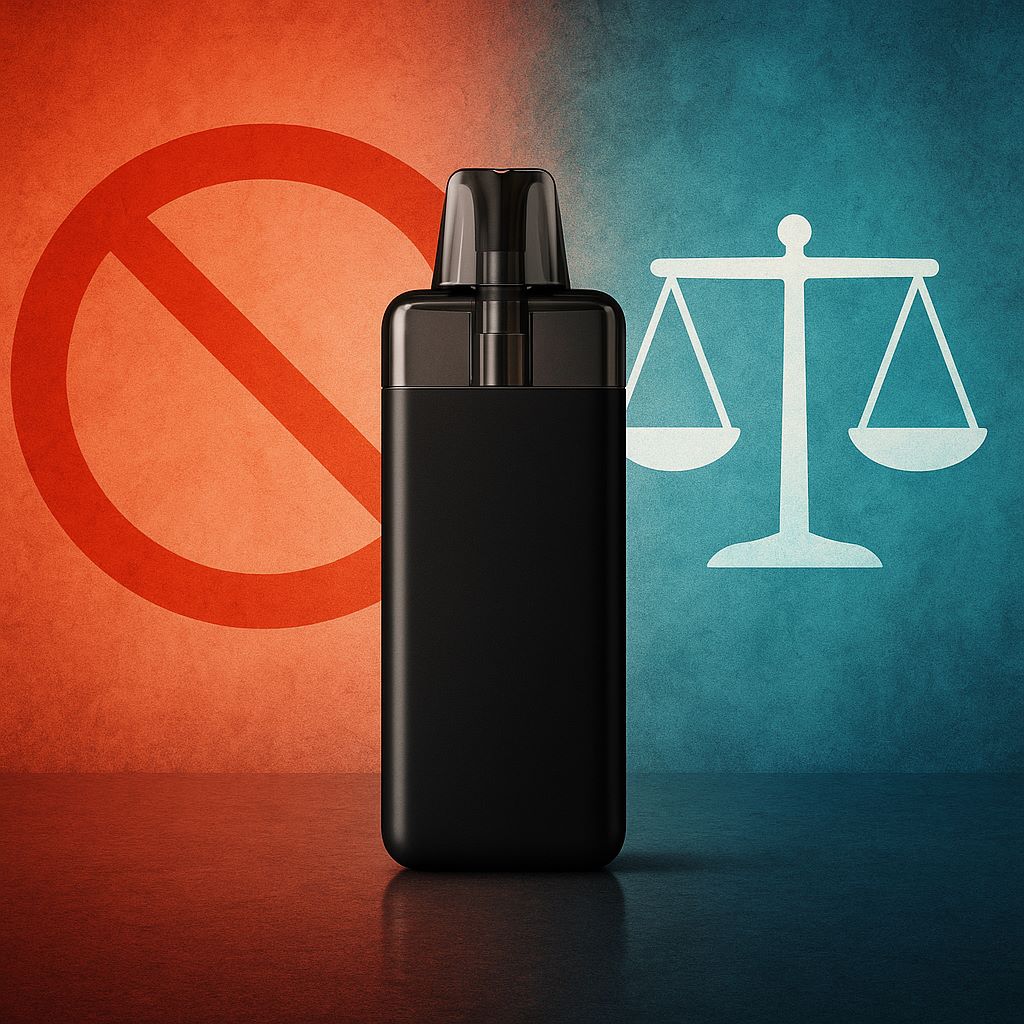In the past year, many countries around the world have made significant adjustments to their regulatory policies on e-cigarettes and other novel tobacco products. One-time e-cigarette bans, flavor restrictions, pharmacy sales systems, and comprehensive prohibitions on e-cigarettes have emerged, creating a complex global policy landscape.
However, behind these rapid changes, two key questions deserve deeper reflection: Can “bans” truly achieve the expected outcomes? More importantly, what kind of regulatory approach can truly benefit public health, industry standards, and consumer rights? The answer may lie in the phrase: “The future of e-cigarette regulation should not stop at prohibition, but move toward balance.”
01 From “one-size-fits-all” to “graded management”: Regulation enters the era of precision
例如, in Europe, Belgium, France, and the UK have announced bans on the sale of one-time e-cigarettes. Latvia and Slovenia have restricted the flavors of e-liquids, allowing only tobacco and mint flavors. These policies aim to reduce the risk of e-cigarettes being used by minors, but they have also raised concerns among adult users and the industry.
On one hand, flavor diversity is a key factor in encouraging smokers to switch to less harmful alternatives. On the other hand, one-time e-cigarettes, due to their portability, have become a common choice for smokers seeking to control their smoking habits. If these bans lack differentiation and alternative mechanisms, they may easily lead to consumption spilling over into the illegal market. True balance should restrict the use of e-cigarettes by minors while leaving adult users with reasonable choices.
02 Australia’s case: The strictest policy fails to stop a 1.9 billion AUD black market
Australia enforces the world’s toughest e-cigarette rules: all products need a prescription and must be purchased in pharmacies. Furthermore, flavor choices are restricted, and packaging must follow uniform designs, ensuring consistent market presentation. However, this “pharmaceutical-level regulation” has not stopped the growth of the illegal market. Data shows that the total value of illegal tobacco trade in Australia has reached 1.9 billion AUD, which not only harms legitimate businesses but also causes significant tax losses.
This case highlights an important lesson: Policies cannot be detached from the realities of the market. Overly restrictive policies may become breeding grounds for the illegal market.
03 North America’s tug-of-war: Mint flavor disputes highlight regulatory contradictions
In the United States, the FDA has proposed a ban on mint-flavored cigarettes, which has sparked widespread controversy. Mint-flavored cigarettes account for about one-third of the U.S. cigarette market. The ban would not only affect corporate revenues but also raise concerns about the infringement of adult consumers’ rights to choose.
In Canada, although the government has already restricted e-cigarette flavors, the market still sees a large number of “gray sales” and online bypasses. Policy-makers face a dilemma: They must control risks while ensuring legality; they must restrict the use of e-cigarettes by minors while respecting the choices of adults. The “fragmented” nature of regulation is a challenge that must be addressed in future governance.
04 Asian trends: Moving away from the “comprehensive ban” and focusing on practical effectiveness
In the Philippines, a new regulation was introduced in June 2024, requiring all e-cigarette products to obtain certification marks and customs labels, with a six-month transition period. This is a typical example of “science-based regulation,” aiming to balance consumer safety and industry standards.
India banned e-cigarettes in 2019, yet a thriving black market and lax enforcement have rendered the policy largely ineffective. In contrast, Indonesia takes a more comprehensive approach—it raises the legal purchase age, restricts nicotine levels, enhances packaging warnings, and bans social media advertising. This approach suggests that “gradual restrictions + standardized governance” may be more sustainable than a “comprehensive ban.”
05 What kind of “balance” is needed?
The so-called “balance” is not about doing nothing or a complete crackdown, but about establishing a regulatory environment that is manageable, taxable, replaceable, and enforceable. Specifically, it should include the following aspects:
- Scientific understanding: Based on harm reduction principles, clearly define the differences in risk between e-cigarettes and traditional cigarettes.
- Age protection: Use digital identity verification and QR code validation to restrict minors from accessing e-cigarettes.
- Channel control: Allow compliant enterprises to obtain operating licenses and quickly eliminate illegal products.
- Product standards: Establish unified national or regional standards for flavors, ingredients, and nicotine concentration.
- Public participation: Involve regulatory agencies, the industry, medical professionals, and consumers in the policy-making process.
結論
The goal of e-cigarette regulation should not be limitation, but the establishment of trust.
In an era of divergent regulatory environments, the hardest part is not issuing bans but designing sustainable, enforceable, and acceptable mechanisms. When we only talk about “bans,” the market will automatically seek loopholes. When we begin to talk about “balance,” governance may begin to mature. Bans are not the ultimate goal, but a transitional step toward a better path for public health.
For the e-cigarette industry, compliance is not the end, but a way of survival.

